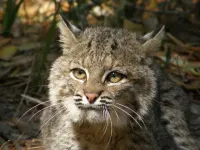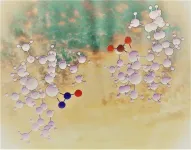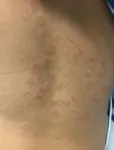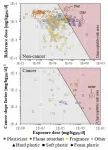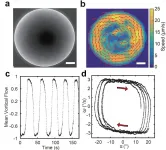(Press-News.org) The reintroduction of 32 bobcats to an island off the coast of Georgia more than three decades ago created an ideal experiment to examine the accuracy of a genetic-modeling technique that predicts extinction of isolated wildlife populations.
That's the conclusion of Penn State researchers who continue to monitor the bobcat population on Cumberland Island National Seashore, and who conducted a study comparing and contrasting the Cumberland Island bobcats to a population of bobcats on Kiawah Island off the coast of South Carolina.
The research was led by Cassandra Miller-Butterworth, associate professor of biology at Penn State Beaver, and Duane Diefenbach, Penn State adjunct professor of wildlife ecology who, as a doctoral candidate at the University of Georgia in 1989, reintroduced bobcats captured on the Georgia mainland to Cumberland Island. Before freeing the bobcats on the island, he drew blood samples from the animals and froze them. DNA in those samples now serves as a baseline to compare how the population is faring.
The bobcat reintroduction was part of Diefenbach's doctoral research, in which he documented the survival and reproduction of the reintroduced bobcats and collected blood samples from the first litters of kittens born on the island. Since then, he has returned to the island many times over the years with students and volunteers to collect bobcat scat from which to extract DNA to monitor the population's genetic health.
There now are 24 bobcats on Cumberland Island, which is separated from the mainland by open water that prevents bobcats from the mainland from immigrating. DNA from the scat allows the scientists to identify individual bobcats, which enables them to estimate abundance and survival rates and measure levels of inbreeding.
"Because we had DNA from the founding population, we were able to document the loss in genetic diversity over time in the population," said Diefenbach, leader of the Pennsylvania Cooperative Fish and Wildlife Research Unit, which is housed in Penn State's College of Agricultural Sciences. "Over the past 30 years, the population has lost about 15% of its genetic diversity. There appears to be some inbreeding, but generally it is low."
Over the last decade, Diefenbach has collaborated with Miller-Butterworth, a wildlife population geneticist, to analyze the bobcats' DNA. Her laboratory handled all the molecular analyses from the blood samples.
Diefenbach and Miller-Butterworth also assessed the bobcat population on Kiawah Island. After trappers in 2015 and 2016 donated tissue samples from bobcats on the South Carolina mainland, the researchers determined that bobcats do occasionally travel on and off that island, likely over a bridge for vehicles.
"On Kiawah, we studied the genetics and found that about every five years, a bobcat from the mainland contributes genes to the island population," Miller-Butterworth said. "Consequently, genetic diversity on Kiawah Island is lower than on mainland South Carolina, but still higher than on Cumberland Island."
The research findings, recently published in Global Ecology and Conservation, indicate that the probability of Cumberland Island bobcats becoming extinct will continue to increase over time. By 2040, the researchers predicted, the risk of extinction will increase to about 20% without any human intervention to restore the loss in genetic diversity, perhaps by introducing a bobcat from the mainland every four or five years.
However, the findings provide good news for people trying to protect endangered species, Miller-Butterworth pointed out.
"We found that population viability models that predict the fate of the population did a good job in predicting the loss in genetic diversity and the long-term population size," she said. "I was surprised at how closely the modeling data and the empirical data matched -- you don't see that often. When we were running the population viability analyses, the predictions that we got for genetic variation, or heterozygosity, matched almost exactly what we were finding with our empirical DNA data."
The Cumberland Island bobcat study is valuable because it yielded information that may be useful in future research used to rescue endangered felid populations, such as Iberian lynx or Eurasian lynx, for which extinction risk may be high, Miller-Butterworth explained. Bobcats are not threatened as a species, but the isolated population on Cumberland Island simulates an endangered species scenario in which a population becomes isolated due to habitat loss and fragmentation and loses genetic variation over time -- an increasingly common scenario for many endangered species.
"The benefit is we can use this as a case study, or a test case, to figure out what works to re-establish the population's viability, and then that knowledge potentially can be used to extrapolate what would work for an endangered species where the situation is dire," she said. "If we make a mistake in our calculations on Cumberland Island, it would be sad, but it wouldn't result in losing a species."
INFORMATION:
Also involved in the research at Penn State were Jessie Edson, genetics laboratory manager, and Tess Gingery, research technologist, both in the Department of Ecosystem Science and Management. Other members of the team were Leslie Hansen, Los Alamos National Laboratory, Los Alamos, New Mexico; James Jordan, Town of Kiawah Island, South Carolina; and Amy Russell, Department of Biology, Grand Valley State University, Allendale, Michigan.
The National Park Service, the U.S. Geological Survey, the Town of Kiawah Island and Penn State Beaver provided support for this project.
Like its chemical relative carbon dioxide (CO2), nitrous oxide (N2O) is an important greenhouse gas and the dominant ozone-depleting substance emitted in the 21st Century. Consequently, strategies for limiting its emissions and its catalytic decomposition with metals are being developed. A recent study indicates that nitrous oxide can bind to metals similarly to carbon dioxide, which helps to design new complexes with even stronger bonding. This could allow the use of nitrous oxide in synthetic chemistry or help to degrade it to substances harmless to the atmosphere. The results were reported in the journal Angewandte Chemie International Edition as a Very Important Paper on February 17th 2021.
A comprehensive analysis of the global N2O budget has ...
UNIVERSITY PARK, Pa. -- The COVID-19 pandemic has prompted considerable investigation into how the SARS-CoV-2 Spike protein attaches to a human cell during the infection process, as this knowledge is useful in designing vaccines and therapeutics. Now, a team of scientists has discovered additional locations on the Spike protein that may not only help to explain how certain mutations make emerging variants more infectious but also could be used as additional targets for therapeutic intervention.
"Significant research is underway to examine how the receptor binding domain (RBD) at the tip of the club-shaped SARS-CoV-2 Spike protein attaches to an ACE2 receptor on a ...
A new study from researchers at the University of Ottawa's School of Psychology has found that using negative emojis in text messages produces a negative perception of the sender regardless of their true intent.
Isabelle Boutet, a Full Professor in Psychology in the Faculty of Social Sciences, and her team's findings are included in the study 'Emojis influence emotional communication, social attributions, and information processing' which was published in Computers in Human Behavior.
Study background: Eye movements of 38 University of Ottawa volunteer undergraduate student participants were tracked and studied, and the volunteers were shown sentence-emoji pairing under 12 different conditions where sentences could be negative, positive, ...
Philadelphia, February 22, 2021--In April 2020, pediatricians began recognizing a puzzling syndrome in children involving hyperinflammation that results in an array of symptoms, including fever, gastrointestinal distress and rash. The syndrome, thought to be a post-infectious complication of SARS-CoV-2 infection, was given the name Multisystem Inflammatory Syndrome Children, or MIS-C. However, diagnosing the condition has posed challenges, as many of its symptoms, including rash, are common in many other pediatric infections.
In a study published in Open Forum Infectious Diseases, researchers at Children's Hospital of Philadelphia (CHOP) describe the ...
It has long been known that several chemicals used in plastic toys in different parts of the world can be harmful to human health. However, it is difficult for parents to figure out how to avoid plastic toys containing chemicals that may cause possible health risks to their children.
Regulations and labelling schemes are different across regions and countries, and there is no international agreement on which substances should be banned from use in toy materials. For the most part, regulations and international lists of 'chemicals of concern' in toys focus on certain substance groups with known harmful properties, such as phthalates, but do not cover the wider range of chemicals found in plastic toys.
Researchers from DTU ...
With the COVID-19 pandemic taking a disproportionate toll on low-income people of color, a research team headed by Marya Gwadz of the Silver School of Social Work at New York University set out to understand the ways the pandemic may put individuals at risk for adverse outcomes, and the ways they successfully adapted to and coped with the emerging pandemic, focused on those from low-socioeconomic status backgrounds who have lived with HIV for a decade or longer.
The team's newly published study explores the effects of COVID-19 on engagement in HIV care, HIV medication use and overall wellbeing during the early stages of the ...
About 70% of the world's main crops depend on insect pollination. Climate change is already affecting the abundance and distribution of insects, which could cause geographical mismatches between crops and their pollinators. Crops that rely primarily on wild pollinators (e.g., crops that cannot be effectively pollinated by commercial colonies of honey bees) could be particularly in jeopardy. However, limited information on plant-pollinator associations and pollinator distributions complicate the assessment of climate change impacts on specific crops. To study the potential impacts of climate change on pollination of a specific crop in North America, we use the case of open?field ...
Macrocyclic peptides are promising candidates for pharmaceuticals, but their screening is difficult. Scientists have now developed an easy-to-use, high-throughput screening assay for cyclic peptides with affinity to ubiquitin, a protein that helps to degrade proteins and induce cell death. The results could lead to novel drug candidates against cancer, according to the study published in the journal Angewandte Chemie.
Drugs based on peptides (small proteins) are often too large to pass through cell membranes. To make such peptides more compact and stable--and thus more efficient--researchers are investigating their closed versions, called macrocyclic ...
This new finding may pave the way for fabricating a new class of self-driven devices and materials, such as the ability to control the rhythmic movement of soft robots without relying on electronic circuits, and for the study of microbial physiology. It has been published in the scientific journal Nature.
A fast growing and interdisciplinary field, active matter science studies systems consist of units where energy is spent locally to generate mechanical work. Active matter includes all living organisms from cells to animals, biopolymers driven by molecular motors, and synthetic self-propelled materials. Self-organisation (the process of producing ordered structures via interaction between ...
A SARS-CoV-2 tracker uses publicly available sequencing data to show how the virus is changing and spreading over time. The tracker, called CovMT, was developed at KAUST and is expected to help researchers and policymakers understand the evolution of the virus's mutations. This could have implications for vaccine development, patient treatment and the implementation of restrictions.
"As new variants of the SARS-CoV-2 virus emerge, authorities around the world need to know if these, or similar variants, have entered their countries," says computational biologist, Intikhab Alam, who designed ...
